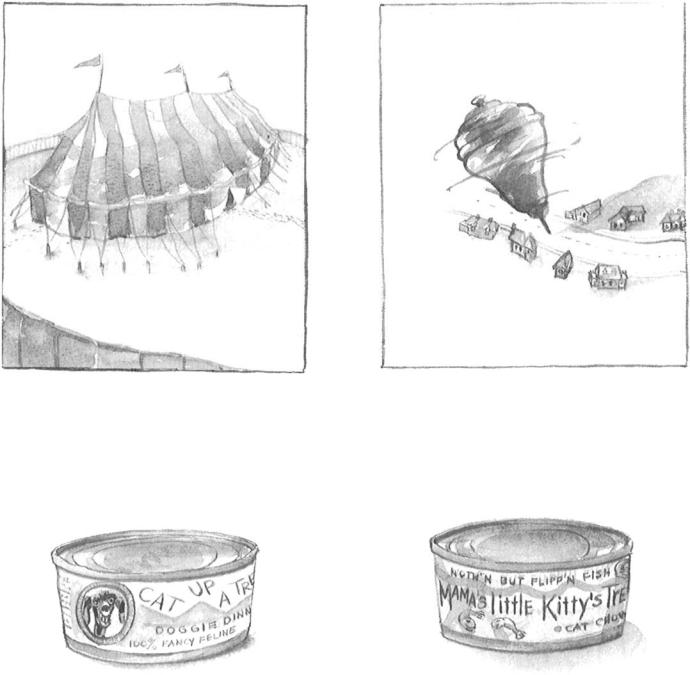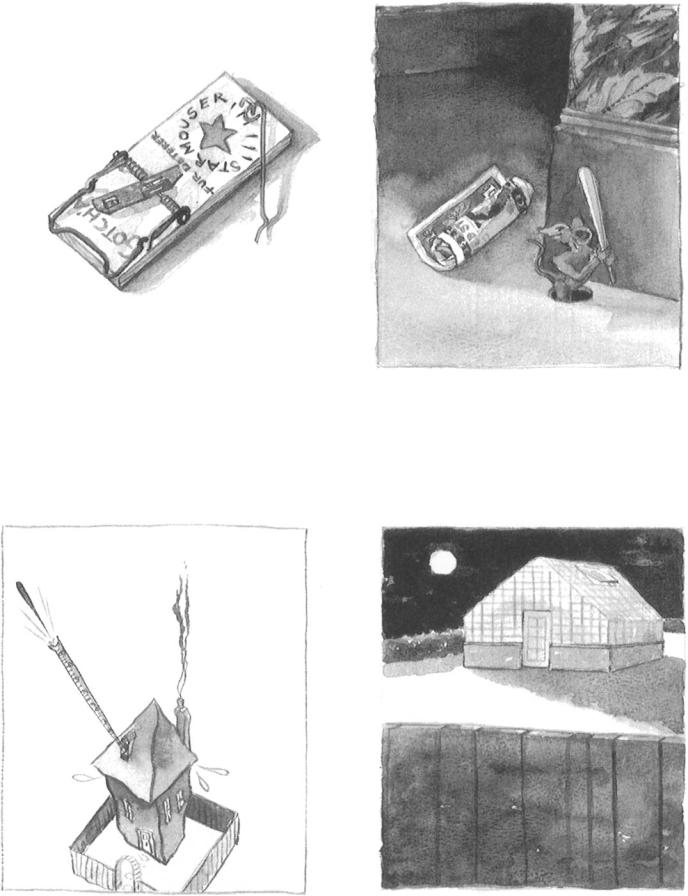
- •Contents
- •Preface
- •Acknowledgments
- •1.1 A Clockwork Orange: Meaning and Form in Context
- •1.3 Compound and Noun Phrase Ambiguities
- •1.6 Word Building 3: Tohono O'odham
- •1.7 Word Building 4: Tohono O'odham
- •1.9 Morphophonology 2: Turkish
- •1.10 Morphophonology 3: -ity Affixation (English)
- •2.1 Reverse Transcription
- •2.2 Transcription: Monosyllables
- •2.4 Special Topic 1: Phonetic Variation (English /t/)
- •2.6 Writing Systems: Japanese
- •3.1 Phonological Rules 1: English Past Tense
- •3.3 Phonological Rules 3: Tohono O'odham
- •3.4 Phonological Rules 4: Zoque
- •3.5 Phonological Rules 5: Japanese
- •3.6 Phonological Rules 6: Japanese
- •3.9 Special Topic 3: Phonetic Variation (French Vowels)
- •3.10 Special Topic 4: Liaison (French)
- •4 Syntax
- •4.2 English Syntax 2: Simple NPs, VPs, and PPs
- •4.4 English Syntax 4: Tree and Sentence Matching
- •4.5 English Syntax 5: Possessive NP with a PP
- •4.6 English Syntax 6: Verb-Particle versus Verb-PP Structure
- •4.7 English Syntax 7: S-Adverbs versus VP-Adverbs
- •4.8 English Syntax 8: Arguing for Syntactic Structure
- •4.10 Simple Sentences 2: Tamil
- •4.11 Simple Sentences 3: Tohono O'odham
- •4.12 Simple Sentences 4: Yaqui
- •4.13 Simple Sentences 5: Dyirbal
- •4.14 Simple Sentences 6: Japanese
- •4.15 Complex Sentences 1: Japanese
- •4.16 Complex Sentences 2: Modern Irish
- •4.17 Morphosyntax 1: Telugu
- •4.19 Morphosyntax 3: Classical Nahuatl (Aztec)
- •4.20 Morphosyntax 4: Merkin
- •4.22 Special Topic 2: Reflexive (English)
- •4.23 Special Topic 3: Reflexive (Russian)
- •4.24 Special Topic 4: Reflexive (Japanese)
- •4.25 Special Topic 5: Reflexive (Japanese)
- •5 Semantics
- •5.1 Compositional and Noncompositional Meanings
- •5.2 Ambiguous Words
- •5.4 Homophony and Polysemy
- •5.5 Evaluative and Emotive Meaning
- •5.6 Special Topic: Grammaticalization of Semantic Properties
- •6 Language Variation
- •6.1 Pronouns: English
- •6.2 British English
- •7.2 Indo-European to English 2
- •8.1 Identifying the Message
- •8.2 Communication Breakdown
- •8.3 Literal/Nonliteral Use
- •8.4 Indirectness
- •8.5 "Unclear Reference" of Pronouns: English
- •8.6 Performative Verbs versus Perlocutionary Verbs
- •8.7 Proverbs
- •8.8 Pronoun/Antecedent Agreement: English
- •8.9 Major Moods 1: Finnish
- •8.10 Major Moods 2: Copala Trique
- •8.11 Major Moods 3: Mandarin Chinese
- •8.12 Pragmatics: Navajo
- •9 Psychology of Language
- •9.1 Speech Errors
- •1 How to State Phonological Rules
- •2 The Role of Distinctive Features in Phonological Rules
- •3 Transcription Key
- •4 Chart of Distinctive Features
- •5 Some Phrase Structure Rules for English
- •6 The Message Model of Linguistic Communication
- •7 Major Moods
- •8 Index of Languages
- •Bibliography
Name
Section
1.3 Compound and Noun Phrase Ambiguities
English words can combine to form compound words, sometimes referred to simply as compounds (such as car-phone, windmill, golf club). (For discussion of compounds, see Linguistics, pp. 32-35 and 50-52.) A major indicator that a sequence of two words is a compound is that the relative prominence (emphasis, stress) occurs on the first word. Consider the words green and house. The sequence green house is a compound if green is emphasized (represented here as GREEN house). A GREEN house is a building, usually made of glass, in which plants are grown. However, if the word house is stressed (green HOUSE), then the sequence green house is not a compound but a noun phrase that is composed of the adjective green modifying the noun house. Thus, a green HOUSE is a house that is green.
There are other differences between noun phrases and compounds. First, the comparative -er, which attaches to adjectives (richer, smaller, etc.), can attach to green in the noun phrase green HOUSE to yield greener house. The compound interpretation is not possible in this case. Second, in the case of the noun phrase green HOUSE additional adjectives may be conjoined with green. For example, someone who talks about a green and yellow house is still referring to a house that is (in part) green. However, the expression and yellow cannot interrupt the members of a compound (*GREENandyellowhouse).
Like simple nouns, compounds can be ambiguous. In fact, a compound can acquire a second or third meaning through the creative use of language. For example, egg roll can be used to refer either to a certain kind of Chinese food or to an activity that takes place (e.g., at the White House) around Easter.
Humor often taps heretofore mthought-of ambiguities. For each pair of drawings, you are to determine (1) whether the combination of words under the drawing is an ambiguous compound (a compound that is associated with two different meanings, like the example egg roll) or (2) whether the combination of words can be understood either as a compound or as a noun phrase (like the example green HOUSWGREEN house). Study the drawings and answer questions A, B, and (optionally) C.


3. Big-Top
4. Cat-Food

5. White-Fish
7
0 CU0
o 6. Church-Key

7. Mouse-Trap
8. Hot-House
Questions
A.Which combinations of two words are ambiguous compound nouns? (List them by number.)
B.Which combinations of two words could be either a noun phrase or a compound noun? (List them by number.)
C.(Optional) Either draw or describe a drawing or situation similar to the pairs found in this exercise. That is, find a case of (1) a compound that has two possible meanings or (2) a case of a sequence of words that are interpretable either as a compound or as a noun phrase.
Name
Section
1.4 Word Building 7: -ness Affixation (English)
For this exercise, consider the following words:
|
List I |
List I1 |
l. furious |
furiousness |
|
2. |
infectious |
infectiousness |
3. courteous |
courteousness |
|
4. |
powerless |
powerlessness |
5. |
fair |
fairness |
6, clever |
cleverness |
|
7. |
warm |
warmness |
8. useful |
usefulness |
|
9. |
prideful |
pridefulness |
10. heavy |
heaviness |
|
11. slack |
slackness |
|
12. sick |
sickness |
|
13. sleepy |
sleepiness |
|
Questions
State the word formation rule for the affix -ness, using the following format (see
Linguistics, pp. 35-40):
A.Phonological change
B.Category change
1.What part of speech does -ness attach to? That is, what is the part of speech of the words in list I?
2.What is the part of speech of the derived word? That is, what is the part of speech of the words in list II?
C.Semantic change
What meaning change is caused by the suffix -ness? That is, in the ideal case, what element of meaning does it contribute?
Name
Section
7.5 Word Building 2: -li ke Aflixation (English)
Examine the data in lists I and II and answer questions A-F. It will be helpful to review the material in Linguistics on parts of speech (pp. 19-23).
|
List 1 |
List I1 |
I. war |
warlike |
|
2. |
wife |
wifelike |
3. |
king |
kinglike |
4. |
prince |
princelike |
5. human |
humanlike |
|
6. |
snake |
snakelike |
7. |
child |
childlike |
8. |
lady |
ladylike |
9. |
tree |
treelike |
10. death |
deathlike |
|
11. thumb |
thumblike |
|
12. book |
booklike |
|
13. sportsman |
sportsmanlike |
|
14. dungeon |
dungeonlike |
|
15. fish |
fishlike |
|
Questions
A.The morpheme like combines with a word of what category (part of speech)? That is, what category is X in X-like?
B.The words in list I1 all belong to what category?
C.What meaning change appears to be caused by like? That is, in the ideal case, what element of meaning does it contribute?
D.Have any of the examples in list I1 drifted in meaning? (See Linguistics, pp. 49-50.) If so, which ones? In each case, how does the drifted meaning differ from the compositional meaning (i.e., the sum of the meaning of the stem, X, plus the meaning of like)?
E. Consider the following examples and answer the questions below:
idealike justicelike happinesslike
Can like combine with any word belonging to the category in your answer to question A? That is, can any word belonging to the same category as the words in list I combine with like? If there are restrictions, what do they appear to be?
F. Does like combine only with words of the category exemplified in list I, or can it combine with words from other categories as well? Give examples and explain.
